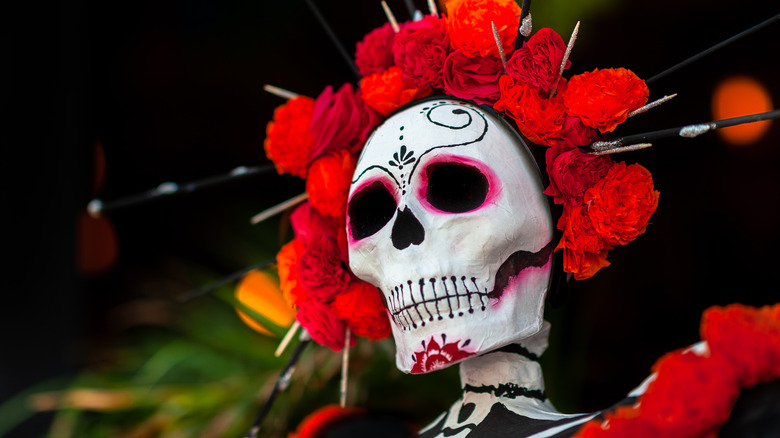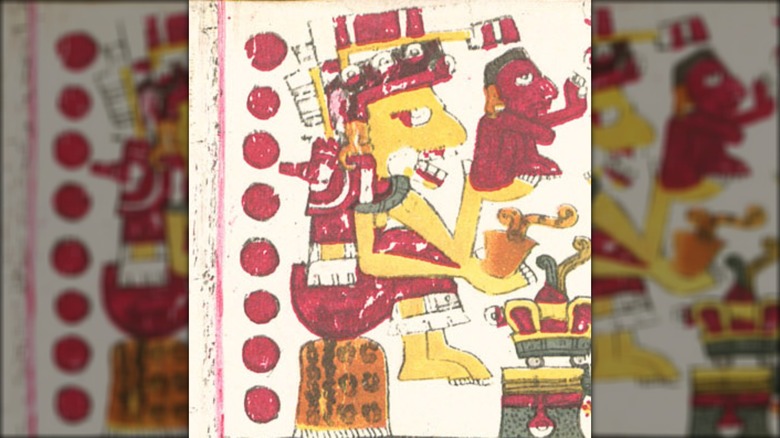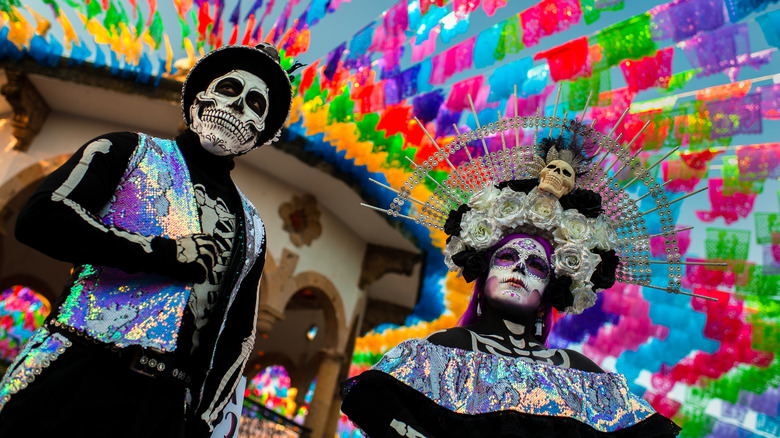The Origins Of Day Of The Dead
Día de los Muertos, or as it is known in English the Day of the Dead, is a Mexican festival held every November 2, as well as October 31 and November 1 in some regions. The event is one of the most prominent on the country's calendar when people from all walks of life come together to pay their respects to the dead and to celebrate death as a natural part of life. As such, it is characterized by overt images of mortality, such as skeletons and the famous sugar skulls that have become synonymous with the festival and which are now commonly seen throughout pop culture design. According to UNESCO, an important aspect of the festival is the laying of offerings such as flower petals and food, which are said to encourage the spirits of the dead to visit their living relatives for the duration of the celebration and to bring good fortune.
Today, the celebration is a festival of color, with bright outfits, toys, and ostentatious decorations bedecking streets and private residences among the clamor of parades, dance, and musical performances. Its roots, however, go back centuries, to before the arrival of European colonialists in America. It is derived from Indigenous celebrations that took place each fall in honor of people's deceased relatives and their ancestors.
An indigenous tradition
The origins of what we now call the Day of the Dead are believed to go back around 3,000 years, long before Christianity was conceived of, with the traditions we know today having originated in the rituals of ancient Mesoamerican peoples such as the Aztecs, Mayans, and Toltecs. The ancient version of Día de los Muertos focused on the worship of a specific goddess: Mictecacihuatl, the "Lady of the Dead," in a celebration that lasted around a month, according to Britannica.
Día de los Muertos began to resemble the festival as it is known today in the 16th century when colonialists from Spain arrived in America bringing Catholicism with them. With the destruction of the Aztec empire, the Spanish began to enforce their religion on the indigenous people. However, the traditional rituals survived, with the colonialized peoples merging their pre-existing customs with the religious practices from Europe that they had to adopt by necessity.
Why these dates?
According to History Professor Teresa Van Hoy of Saint Mary's University, Texas, the dates of the Día de los Muertos correspond with the calendar's "cross-quarter days," halfway between the fall equinox and winter solstice that were traditionally believed to be the days that the worlds of the living and the dead were at their most closely connected, making it a good time to contact one's deceased loved ones (via YouTube).
Under the influence of the Spanish colonialists, the celebration has become merged with the Catholic celebrations of All Saints Day and All Souls Day on the first two days of November. While Halloween is often incorporated into the festival, the most important days of the Día de los Muertos celebrations are the first two days of November. November 1 is Dia de los Angelitos, or the Day of Little Angels, which is intended to commemorate the lives of deceased children, whereas November 2 commemorates all lost loved ones.
In 2008, UNESCO officially inscribed the Day of the Dead as one of the Representative List of the Intangible Cultural Heritage of Humanity, highlighting its cultural importance in Mexico and beyond.


